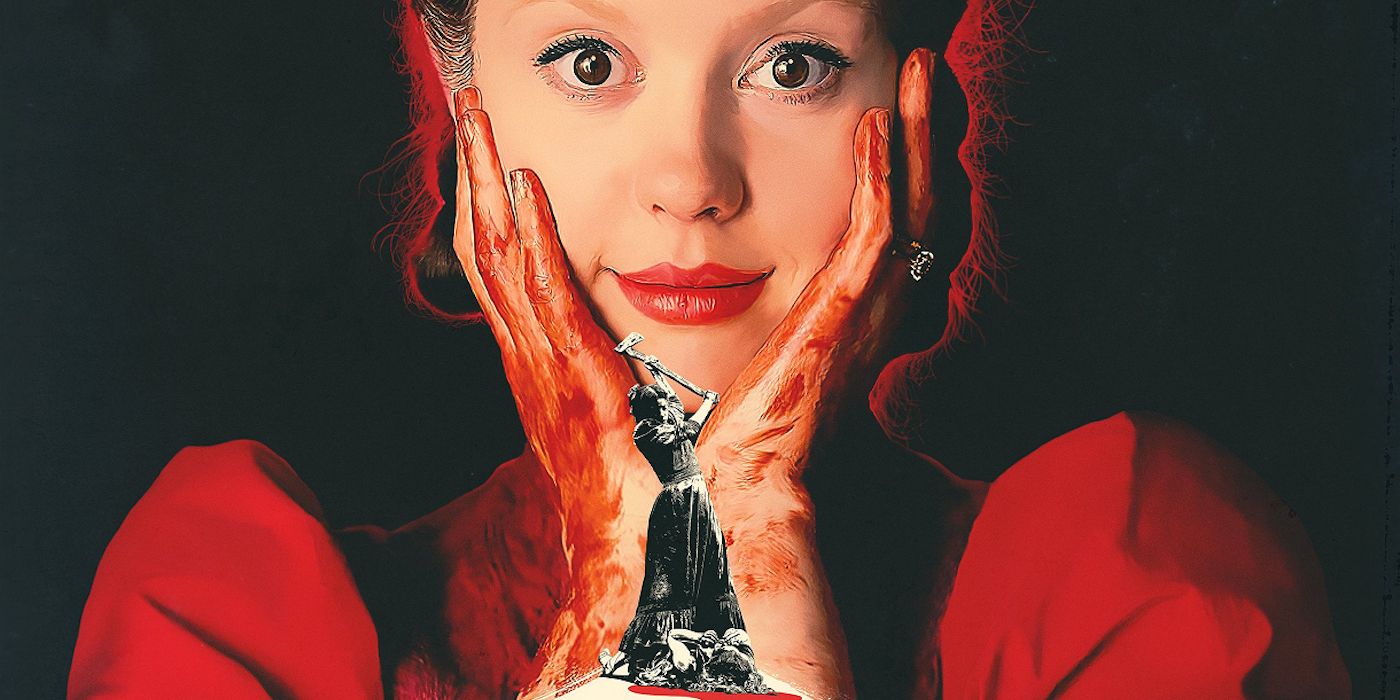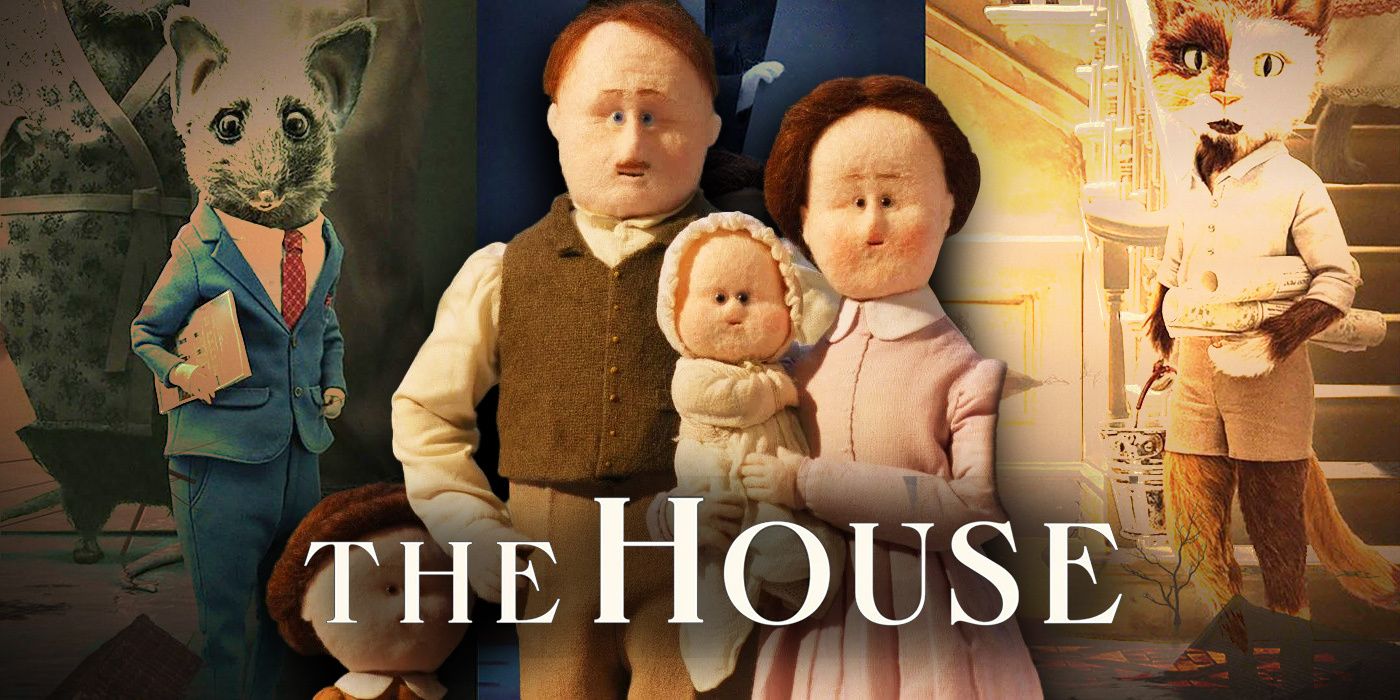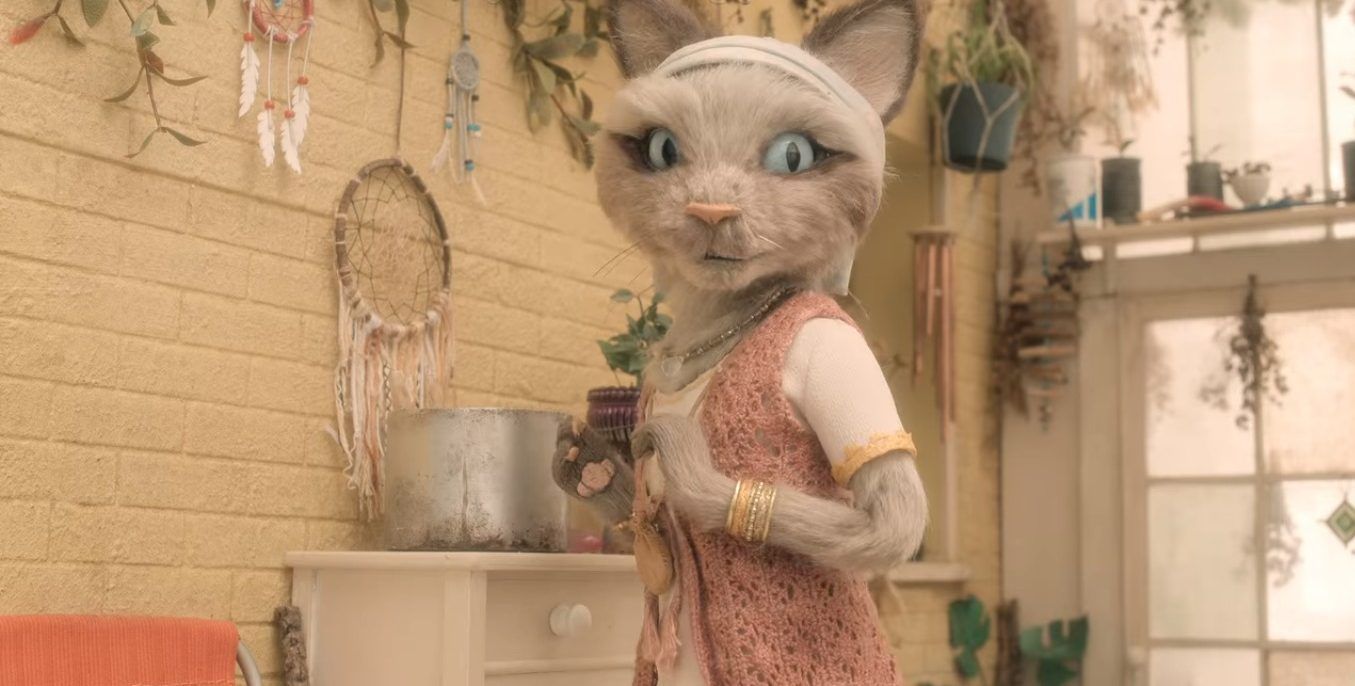The Big Picture
- The House is a stop-motion animation film with eerie tales and stunning visuals, leaving viewers guessing the potential meaning.
- The first two tales caution against placing importance on luxury and material possessions, while the last highlights the value of accepting loved ones as your "home."
- The film emphasizes that a house is just a house without love and urges viewers to prioritize human connection over materialistic goals.
Netflix’s stop-motion animation film The House brought us three eerie tales involving the same house with little to no firm answers in each ending, leaving many people taking guesses at the potential meaning. Most notably starring Helena Bonham Carter (Harry Potter) and Matthew Goode (Downton Abbey), the movie promises quality acting along with its stunning visuals.
While the first two stories were cautionary tales of putting stock in luxury and material possession out of insecurity, the last is a glowing example of releasing those fears and accepting loved ones as your “home”. The film is coated in subtle and blatant gestures to this sentiment from beginning to end, reeling the viewer in with unsettling imagery and dark humor along the way.
Ⅰ:“And heard within, a lie is spun.”
Transported back in time, we find a family of four nestled in their home as they prepare for the arrival of their wealthy and, frankly, unfriendly relatives. Noses upturned, they grimace at all the simple pleasures within our main characters home from the gender of their newest child to the hand-sewn items made by mother and wife, Penny (Claudie Blakley). Their oldest daughter, Mabel (Mia Goth), navigates their presence with an innocent confusion. As far as she’s concerned, her home is perfectly adequate because within it lies the family she adores. Her father Raymond (Matthew Goode) on the other hand seems deeply dissatisfied with this house and his progress in life after multiple disparaging comparisons to his deceased alcoholic father made by their visitors. This insecurity and deep-seated desire to prove himself financially ultimately leads to their demise, because it leaves him vulnerable to the exploitation that inevitably follows.A loving family in a home large enough to hold them all comfortably isn’t enough for Raymond, he craves the outside validation that comes with luxury and finds it in a deal too good to be true. The desperation that guides him leads his family to accept an offer from the nameless figure in the night, promising material possessions beyond their wildest dreams at (seemingly) no cost. The only catch is they are prohibited from returning to their home, and must only occupy the house. This recurring terminology is purposeful throughout the short, a subtle hint at the deeper meaning within the upcoming strange events.
In the final scenes of this haunting tale, we see both parents entirely absorbed in the new lifestyle this house has provided them. Mable and Isabel approach their parents only to find they have literally transformed into furniture: Their father a chair and their mother curtains. Reduced to their own material desires, when the house catches fire, they’re left to burn with it. Although they manage to help their children escape in a last-ditch effort to preserve what’s important, their decisions and misplaced goals likely still result in a grim ending for the innocent pair, now stranded in the snow.
While there are many borderline supernatural events that occur throughout the short, the message throughout remains very human: A house is just a house without love. A home is something far more valuable. The chase for wealth and social status led by insecurity and a deep desire for outside validation is a lonely one. If all of these things you’ve placed so much value in were to burn, what would you have left? What will be left in the wake of your decisions for those you love?

She’s a Marvel Star! Mia Goth Joins MCU’s ‘Blade’
She joins Mahershala Ali in the vampire slaying film.Along with this sentiment, the first installation within The House aims to display how easily one can be taken advantage of in the search for happiness through material possession, and how quickly this pursuit can corrupt what is truly important in life. While there were endless red flags involving the mysterious architect, the “host”, and the house itself; both parents were more than willing to look past each one in order to obtain their misplaced idea of success even at the expense of their children.
Ⅱ:“Then lost is truth that can’t be won.”
In the second part we find ourselves in the present with the focus on an anthropomorphic rat who is renovating the remains of the house from the first tale. It’s quickly revealed that he is buried in debt and worriedly cutting corners to ensure his project is completely finished at the lowest possible cost, with an added pressure of a recession as mentioned on the news.
Throughout the short, we see him struggling with an infestation of bugs in the house that progressively gets worse, a strong metaphor for his rapidly declining mental state plagued by material-led desires left unfulfilled. The developer (Jarvis Cocker) is never given a name, a testament to his isolation that has led to a complete loss of identity. This is given further weight as we witness his declining social skills, starting with making all the guests at his showing uncomfortable despite his best effort, and when it’s revealed that the “sweetheart” he’s been calling is his displeased dentist and not a lover.
It’s likely that our main character ignored his reservations about the strange pair in the interest of selling, but even more likely that he has lost his ability to trust his own intuition through this pursuit of a luxurious future. He quickly learns they have no intention of buying (or leaving, for that matter). The infestation of bugs, and now guests, increases along with the manifestation of his long-ignored mental health symptoms and his feeble attempts to force them out only land him in the hospital.
With his loan agent calling nonstop, no buyers, and seemingly no hope to achieve the things he’s placed higher in life than human connection: We find the developer returned to the house and regressed to his most primal state. Scratching his ear and knocking off his Bluetooth device is the final farewell to his humanity as he joins the horrifying rat-insect hybrids in destroying all material possessions within the house and scurrying off into a tunnel beneath.
Clear warnings all point to the importance of self and connection. Without human connection, what stops us from being reduced to nothing more than primitive desires? What purpose is left in life if we ignore our most basic needs as a means to an end that may never come? In the event this capitalistic goal is met at the expense of self, what would be left of us to enjoy it? Again, the film uses this grim ending to urge us to see how quickly misplaced priorities in life can lead to a painful end, and begs us to place value in what’s truly important. While it’s too late for both the original family and now the developer, we can learn from their mistakes and clear our own mental fog caused by social and economic pressure.
Ⅲ:“Listen again and seek the sun.”
From the title alone, it’s relatively easy to conclude that another lesson will be taught – but this time, with an alternative ending that displays how our choices can prevent the haunting endings prior. The third and final part in The House wraps up the cautionary tales by bringing us into a future where floods have swallowed everything but that same eerie building.
Our main character, Rosa (Susan Wokoma), is the present owner with a lifelong dream of fixing up the house in order to make it her home. During our first witnessed encounter between the two anthropomorphic cats, Rosa and Jen (Bonham Carter), we learn Rosa’s plan was to use her tenants to fund this project and eventually move them out to enjoy the fully renovated home for herself. This pursuit is arguably selfish, but more so misguided. While Rosa has an idealized vision of what “home” means to her, gazing at a photo of her likely lost family, she fails to see that the feeling she craves has been with her all along in the form of chosen family. Her two tenants have remained by her side despite the desolation that inevitably awaits because they care for her, yet she is unable to see that due to her fixation on an unattainable, and once again, materialistic goal.
With the news of the remaining two set to depart and a final shared meal with Jen, the ever-present fog seeps into the house and sets Rosa on a confusing journey through her memories and emotions. She is presented with a choice: Cherish her past but move onward in the company of those she loves, or remain in an isolated delusion destined to drown. Place her priority in a physical building, or accept the support she’s been blinded to from those around her.
Ultimately, Rosa pulls the lever built by Cosmos (Paul Kaye) in her realization that a house is not a home. She follows into the once terrifying unknown with a newfound priority of connection over possession. She learns something her predecessors in this house failed to, and doesn’t fall victim to the same grim fate, thus ending the cycle.
This final scene displays a power we all hold, a choice we can all make to break free. It perfectly sums up the message The House wishes to portray by showing an alternate ending each character could have achieved had they been introspective enough. While we may never have everything we want, and although it’s easy to become consumed in the never-ending climb to fiscal success, the true importance in life lies in who we share it with.
In the ending credits, we hear a song that further drills the message portrayed through each part:
“What’s the difference between a house and a home?
A home is a place you never feel alone.
But a house, oh, a house is
Just a collection of bricks.”
This quote is only one of many within the lyrics that symbolize the value in human connection and love so often lost to the pursuit of materialism. From the beginning to the last credits rolled, The House serves as a brilliant metaphoric lesson. It is visually stunning and soaked with symbolism that might take multiple watches to fully absorb.
The House is currently streaming on Netflix.


